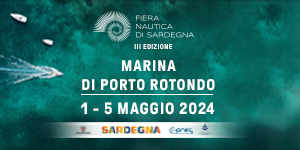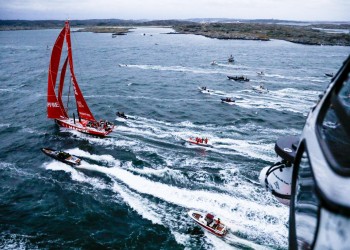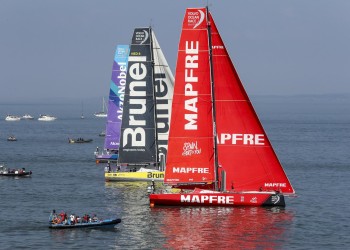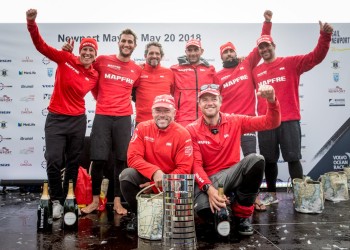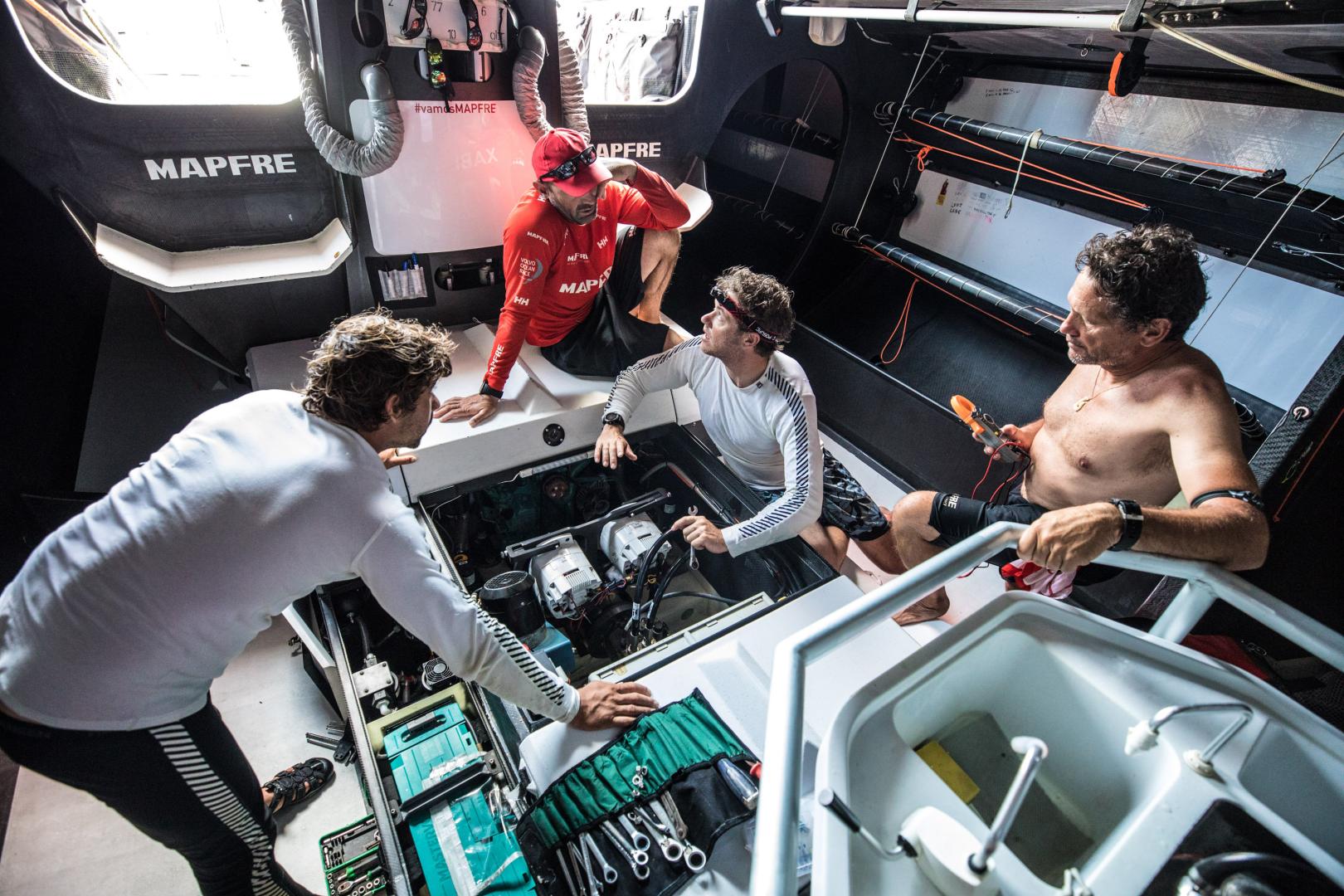
From left to right: Willy Altadill, Xabi Fernández, Ñeti Cuervas-Mons and Joan Vila (© Ugo Fonollá/MAPFRE/Volvo Ocean Race)
Volvo Ocean Race Leg 8, MAPFRE report electrical problems
A new MacGyver-style chapter for MAPFRE. On Sunday, the eighth day of sailing on this new leg from Itajaí to Newport, the Spanish boat informed of an electrical problem, which they had previously suffered in Itajaí two days before the start, and which had reappeared, “In the Boatyard they thought that it had been solved, but it obviously wasn’t,” in spite of swift action and replacing all the parts in Brazil. In contact with the Volvo Ocean Race Boatyard, Xabi Fernández’s crew have found a temporary solution, and although not ideal, it is sufficient to complete the rest of the leg.
“No batteries, no systems, nothing.”
It couldn’t be clearer according to Antonio “Ñeti” Cuervas-Mons, MAPFRE’s bowman and the team’s own MacGyver, who wrote yesterday from the boat. The Spanish boat informed Race Management in the early hours of Sunday morning about the problem they were facing, whilst sailing along the Brazilian coast.
“Independently of all sailing systems, the instruments are out, and we have nothing more than the wind, waves and the horizon to guide us. We also have the compass which can help. Instruments make the difference in helping to find the best performance for the boat. It is particularly at night when it can make the most difference,” declared the team’s watch captain Pablo Arrarte.
The problem appeared when the crew were preparing to make the first of the several battery charges they make each day.
“The main battery fuses which connect the boat have exploded. It also happened just before the start, and we don’t actually know very well why,” explained MAPFRE’s boat captain and bowman Ñeti Cuervas-Mons. The outcome being that the whole boat is without power, and the fuses have blown.
Xabi Fernández explained,
“We have a major problem with the energy on-board, which happened a day or two before the start in Itajaí. In the Boatyard they thought that it had been solved, but it obviously wasn’t. The main fuses have blown out, along with another couple, and consequently quite a few instruments have stopped working, such as the PLC [the ‘brain’ behind the keel system, or the computer which moves the keel from the driver’s position], which is the most important one, a satellite antenna and a few other things, but the most important problem we are trying to solve is the PLC, because we cannot control the keel. We are trying to bypass it so we can open the valves manually and see if that works.”
Two hours later, the crew had managed to make the electrical pump work by using a bypass system with a switch and circuit board, activating some of the keel’s valves manually, and enabling them to use the keel with the auxiliary pump, but not with the main engine.
“We have replaced one of the fuses, but we only have one more spare, and after making several calls to the shore crew to check the system, we have replaced a fuse. For the time being we have managed to make it work with one of the batteries, (on the starboard side) and have been able to get the boat going again,” commented Ñeti.
It is a temporary solution for the team on board, but from now on, to activate the keel, one of the crew needs to be below, and manoeuvres will be slower and more fragile, as
Cuervas-Mons describes,
“The fact that we have to use this system for the keel is tough because it means that one of us has to be below with the switch to manage the keel. The person driving can no longer move it from up on deck. When we have to tack or gybe a lot, or when there is a lot of boat handling it is going to be problematic because we are one person down on deck, and whoever is driving cannot control it either. We will just have to see….”
PROVISIONAL OVERALL LEG 8
ITAJAÍ (BRAZIL) – NEWPORT (UNITED STATES) 5,700 nm
Day 9 – 0700 UTC– 30th April 2018
1. Dongfeng Race Team (CHN, Charles Caudrelier), 3,149.5 nm to the finish
2. Vestas 11th Hour Racing (USA/DEN, Charlie Enright), + 0.2 nm
3. Team Brunel (NED, Bouwe Bekking), + 4.9 nm
4. Turn The Tide on Plastic (Naciones Unidas, Dee Caffari), +5.4 nm
5. Team AkzoNobel (NED, Simeon Tienpont), + 17.1 nm
6. MAPFRE (ESP, Xabi Fernández), + 36.1 nm
7. Team Sun Hung Kai Scallywag (HKG, David Witt), + 63.6 nm





